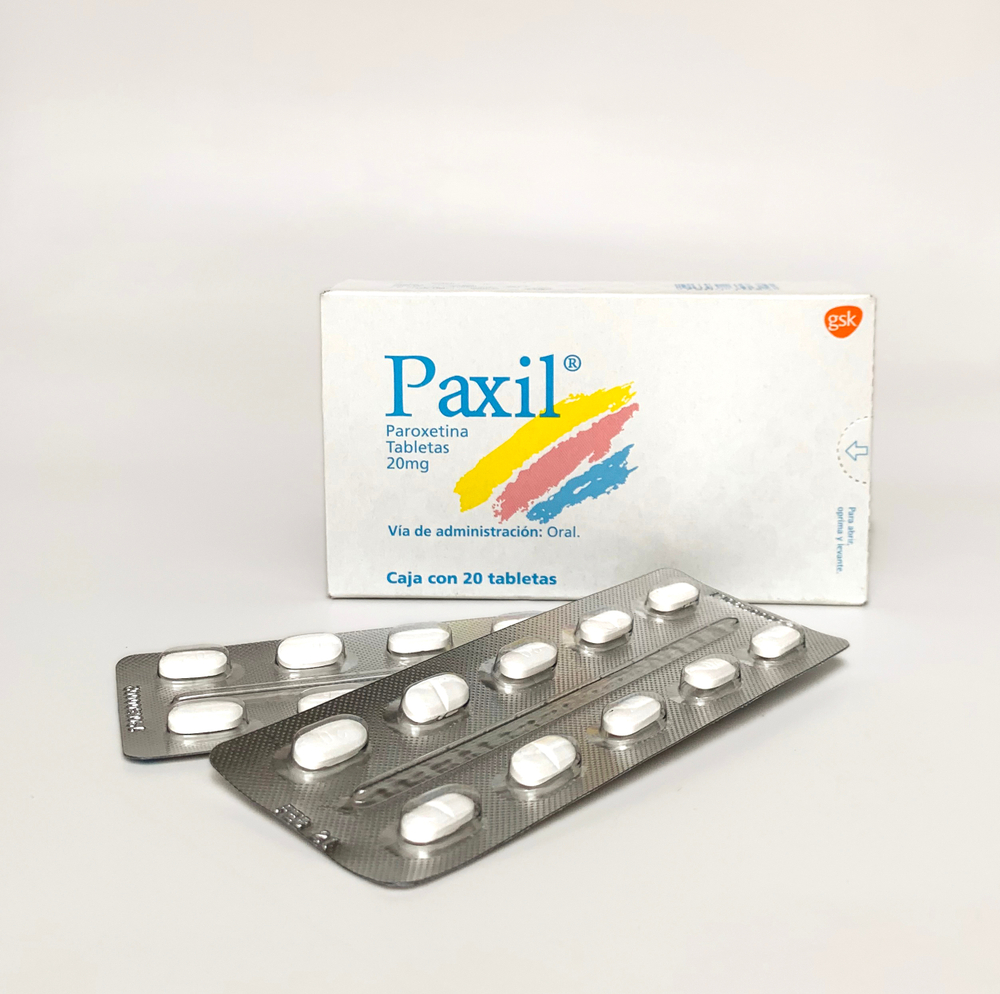Last Updated:
May 16th, 2025
Taking Paxil as Part of the Detox Process
Detoxing from any drug is hard, but it’s the emotional side effects like depression, anxiety and feelings of hopelessness that often push people back to using. Paxil is a type of antidepressant that is sometimes used during detox to ease those symptoms and help people stay on track. It doesn’t take the struggle away completely, but it can make the process slightly smoother. Like all medications, however, Paxil needs to be used carefully under the guidance of your detox and healthcare team. This first requires a full understanding of how Paxil detox medication works, who it can benefit and any potential risks.

What is Paxil?
Paxil, also known by its generic name paroxetine, has been around since the early ’90s and is one of the most commonly prescribed antidepressants out there. It is an SSRI, which means it works by boosting serotonin, the brain’s “feel-good” chemical, to help with conditions like depression, various anxiety disorders, OCD (obsessive-compulsive disorder) and PTSD (post-traumatic stress disorder). In recent years, however, Paxil has also been used during addiction recovery to help with the emotional crash that comes during withdrawal.
Paxil 20 mg and 50 mg are the most commonly prescribed pills, depending on the condition and the person’s individual needs. Generally, a lower Paxil dosage is given first which may then be increased over time. This is important for minimising Paxil side effects and for preventing dependence on Paxil.
How does Paxil reduce cravings?
Paxil detox medication works by helping your brain hold onto more serotonin, the chemical that plays a big part in how you feel emotionally. When you’re going through withdrawal or dealing with mental health issues, your serotonin levels can take a big hit. Paroxetine helps balance that out by stopping your brain from reabsorbing serotonin too quickly. With more serotonin in your system, your mood gets a boost, anxiety eases up, and your sleep often improves, making a tough time feel a bit more manageable.
It’s important to know that Paxil doesn’t work overnight. Like most SSRIs, it takes a few weeks to feel the full benefits. This is because your brain needs time to respond to the new balance of chemicals, so it’s more of a slow and steady shift than an instant fix.
Who is Paxil detox medication best for?
Paxil is often used for strong emotional symptoms which can emerge during withdrawal from alcohol and various illegal and prescription drugs. It can also be a very useful detox medication if you are battling a dual diagnosis of both an addiction and a mental health condition.
Crucially, paroxetine is not meant to treat the addiction itself, but it can help create a more stable headspace. This means you will be better able to engage in rehab therapy, stay motivated during tough moments in recovery and avoid relapse while building lasting skills.
What are the potential side effects of Paxil detox medication?
Most people tolerate Paxil well, but like any medication, it can come with some potential side effects. If you are thinking about using Paxil as part of your addiction recovery plan, it’s important to know what might come up so there are no surprises.
Some of the more common, usually mild, Paxil side effects include:
- Nausea
- Feeling dizzy or lightheaded
- Feeling sleepy during the day
- Having trouble sleeping at night
- A loss or reduction of appetite
- Sweating more than usual
- A dry or chalky mouth
- Paxil drug withdrawal

These are usually most noticeable when you start out and then lessen as you get used to your Paxil medication.
What are the more potentially serious Paxil side effects?
In addition to the more common side effects, there are also some more serious risks that need to be taken seriously. These include:
Notable Paxil drug interactions to be aware of
Paxil, like many medications, doesn’t always mix well with other drugs. Taking it with certain medications and even some seemingly harmless supplements can increase your chances of side effects or reduce how well Paxil works. Some of the most notable Paxil drug interactions include:
Contact us today to learn more about Paxil and the detox process
Whether you’re considering starting a detox or looking for the right programme, our team at Addiction Helper is ready to listen. We will explain how Paxil can ease withdrawal symptoms and help you take that next step into recovery with confidence. Get in touch with us today; your future starts with a simple conversation.
Our compassionate team are ready and available to take your call, and guide you towards lasting the lasting addiction recovery you deserve.
Frequently Asked Questions
(Click here to see works cited)
- WebMD. “Paxil Oral: Uses, Side Effects, Interactions, Pictures, Warnings & Dosing.” WebMD, https://www.webmd.com/drugs/2/drug-6968-9095/paxil-oral/paroxetine-oral/details. Accessed 30 March 2025.
- Thornton, Philip. “Paxil: Uses, How to Take, Side Effects, Warnings.” Drugs.com, 15 August 2023, https://www.drugs.com/paxil.html. Accessed 30 March 2025.
- Nevels, Robert M et al. “Paroxetine-The Antidepressant from Hell? Probably Not, But Caution Required.” Psychopharmacology bulletin vol. 46,1 (2016): 77-104.
- MedlinePlus. “Paroxetine.” MedlinePlus, 15 January 2022, https://medlineplus.gov/druginfo/meds/a698032.html. Accessed 30 March 2025.

